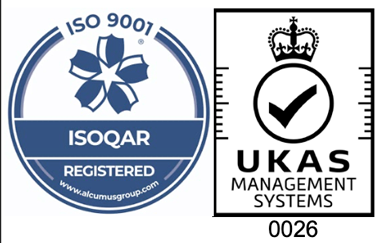Properties of Natural and Synthetic Rubber
12th February, 2024
Natural and Synthetic rubber have properties that suit a range of different projects. Depending on your requirements we have natural and synthetic rubbers for all your needs. We’ll discuss the differences between natural and synthetic rubber and the different areas each excels in.
Natural Rubber:
Natural rubber is a type of elastomer, a polymer with elastic properties, that is obtained from the latex sap of certain plants, primarily the rubber tree (Hevea brasiliensis). The latex is processed to remove impurities and water, and then it undergoes a process called vulcanization. Vulcanization involves adding sulphur and heating the rubber to improve its elasticity, strength, and resistance to temperature changes.
Natural rubber has several desirable properties, including flexibility, high tensile strength, and resilience, making it suitable for a wide range of uses. Common uses of natural rubber include tires, hoses, conveyor belts, shoe soles, and various industrial and consumer goods. While synthetic rubber alternatives exist, natural rubber remains an important and widely used material.
Why choose natural rubber?
Natural rubber has excellent elasticity and flexibility. It can stretch and return to its original shape, making it ideal for products such as tires and conveyor belts where flexibility is key.
Natural rubber is biodegradable, which means it can decompose naturally over time. This is an increasingly important characteristic as sustainability is becoming a priority in many industries.
While natural rubber has these advantages, it also has some limitations, such as degradation when faced with certain chemicals and weathering. The choice between natural and synthetic rubber depends on the specific requirements of your project.
Synthetic Rubber:
Synthetic rubber is a man-made polymer that is produced through chemical processes, as opposed to natural rubber, which is extracted from the latex sap of certain plants. Synthetic rubbers are designed to mimic the properties of natural rubber and can be tailored to meet specific performance requirements for different industries. There are various types of synthetic rubber, each with its characteristics and uses.
Some common types include:
Neoprene: Neoprene is a type of synthetic rubber made through the polymerization of chloroprene. It is known for its resistance to oil, weathering, and ozone, and is often used in wetsuits, gaskets, and hoses.
Nitrile Rubber: This rubber is created by copolymerizing butadiene and acrylonitrile. Nitrile rubber exhibits excellent oil and fuel resistance, making it suitable for applications like seals and gaskets in automotive and industrial settings.
Butyl Rubber: Butyl rubber is now one of the most widely used synthetic rubber compounds on the market. Aquaseal Rubber manufactures a wide range of products in this material, including seals, gaskets, and sheeting, as well as cost-effective compression moulding.
Why choose synthetic rubber?
Synthetic rubbers are often more resistant to certain chemicals, oils, and solvents compared to natural rubber. This makes them suitable for products such as seals, gaskets, and hoses used in automotive and industrial settings.
Synthetic rubbers can be resistant to weathering, ozone, and UV radiation. This property makes them more suitable for roofing materials and outdoor seals where exposure to sunlight and harsh environments are a factor.
It’s important to note that the choice between natural and synthetic rubber depends on the specific requirements of your project, and each material has its advantages and disadvantages. Factors such as cost, performance, environmental considerations, and regulatory requirements play a significant role in the decision-making process.
Natural and Synthetic Rubber at Aquaseal:
At Aquaseal Rubber we’re committed to providing reliable high-quality products to our customers. Our team are experts in their field and are continuously improving our manufacturing techniques. Due to our in-house manufacturing, we can produce items according to the client’s drawings or samples with an extremely fast turnaround. To find out more about our products click here.


